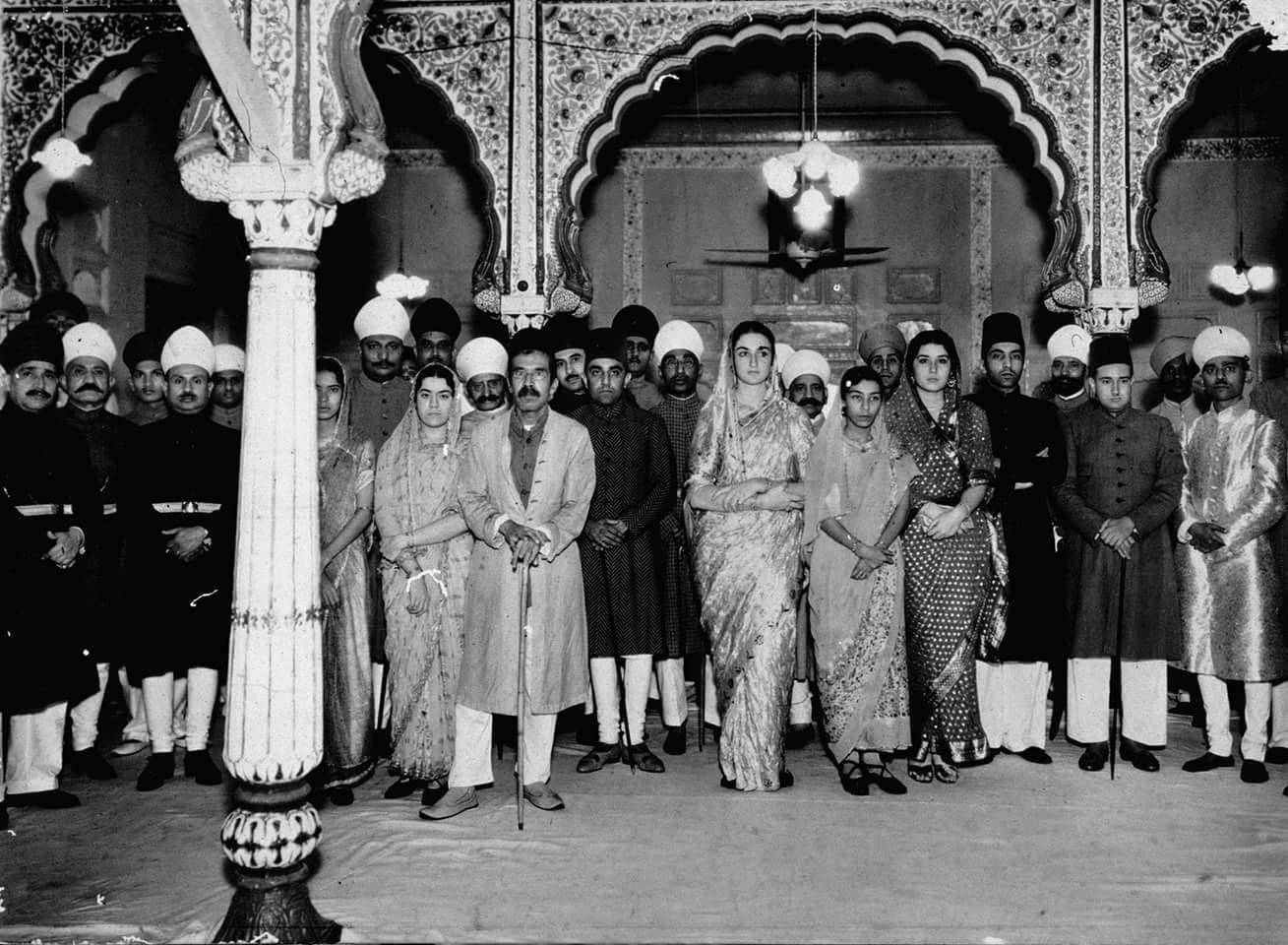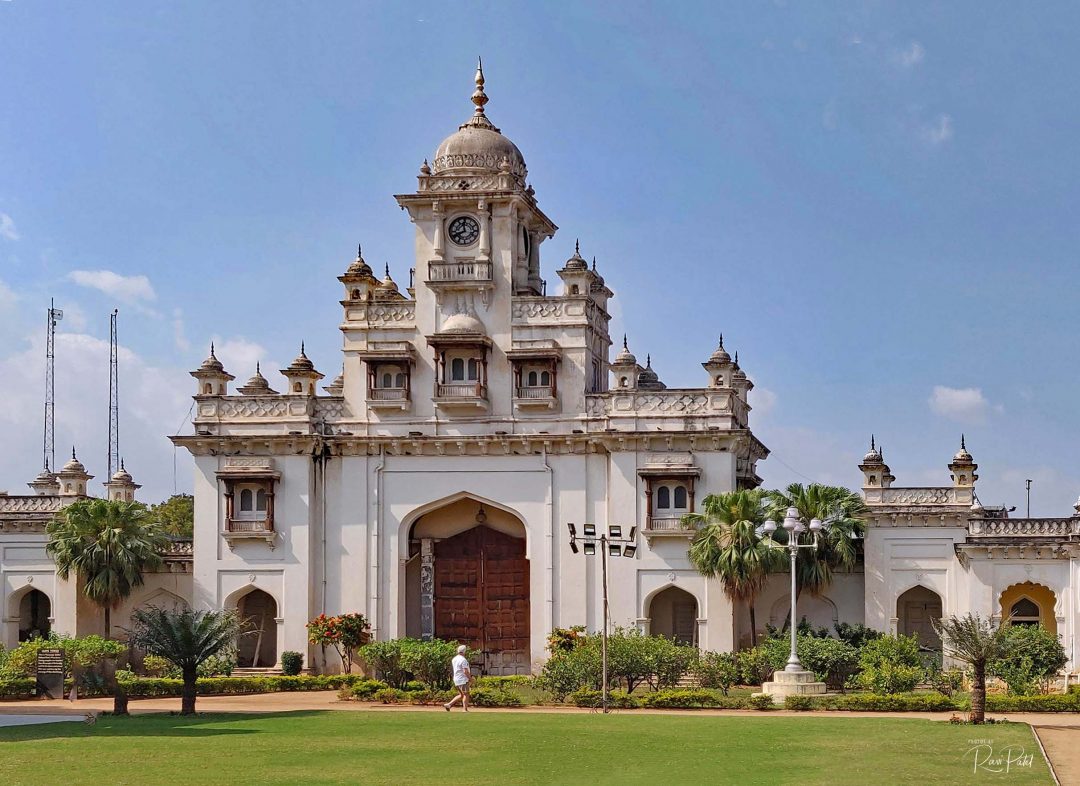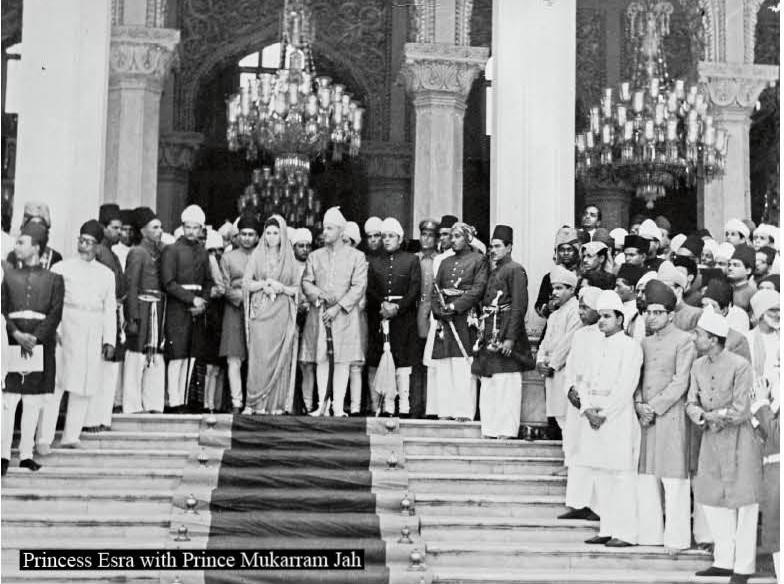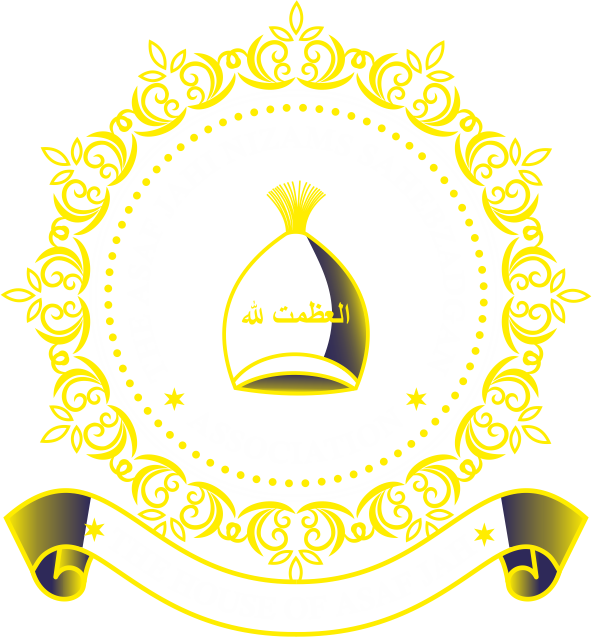Sarf e Khas
Sarf-e-Khas are crown lands across the princely state of Hyderabad belonging to Asaf Jahi Nizam’s family covering almost 10,000 square miles. The Dar-ul-Shifa was the headquarters for Sarf-e-Khas during the reign of Nizam II. Sarf-e-Khas land revenue and the resources were used to serve the royalty exclusively, until its merger with Indian Union in 1948. It was taken over by the Government of India after the accession and paid The Last Nizam and his family a sum of Rs. 50 Lakhs per annum.
On 25th January 1950, The Government of India entered into Agreement with the Ruler of Hyderabad, H.E.H The Nizam VII, Sir, Nawab Mir Osman Ali Khan Bahadur, scheduled under IV different Articles. Under Article II, the Government of India entitled the Ruler of full ownership, use and enjoyment of Private Properties movable and immovable (as distinct from state properties) held by him on the date of the Agreement. The final list of such properties were to be decided by the Arbitrator appointed by the Government of India.
After complete scrutiny of the list of immovable properties held by The Nizam, on the date of Agreement with the Government of India, the lists were revised into III categories, according to Asaf Jahi ancestral properties of the Ruler. The Ministry of States, Government of India conveyed D.O. No. 2 (1)-H/50 dt. 26th /27th Sep 1951 to then Chief Minister Hyderabad, recommending that, H.E.H The Nizam should not make a Trust of the immovable property as they come under “Rulers Property” and not strictly personal.
Finally, on 30th November 1953, The Government of India, through Demi-Official Letter No. 2(1)-H/50, conveyed to H.E.H The Nizam VII, Nawab, Sir Mir Osman Ali Khan Bahadur, Siddiqui, that the Government of India has accepted the Lists I & II, of Immovable Properties as the Rulers Private Property (as distinct from State Properties) without prejudice to Third Party Rights. The list III Properties were subjected to and governed by The Hyderabad State Revenue and Tenancy Laws. These lists of immovable properties are declared by Government of India as H.E.H The Nizam’s Private Properties had been termed as the “ Blue Book of The Nizam “ in the Indian legal terminology. These Properties came to be known as H.E.H. The Nizam’s Private Estate.
Sahebzadas of Sarf e Khas
Sahebzadas are the young princes belonging to the Asaf Jahi Nizam’s Family, who are the descendants of Nizam-ul-Mulk, Asaf Jah I to Asaf Jah VI. Except the descendants who met their inheritance rights under vast Jagirs, Makhta’s, Kothiyat and Mahalat, the rest of the Sahebzadas were under the maintenance with monthly allowances from Sarf-e-Khas being administered by H.E.H The Nizam, the Administrative head of the Dynasty. The Sahebzadas were provided education by the most qualified and experienced teachers and institutions. The most qualified among them were appointed in the administration of H.E.H The Nizam’s Government and held esteemed positions. Sahebzadas were also appointed in H.E.H. The Nizam’s Secretariat, Osmania University, Osmania Hospital, Nizamia Hospital, Railway (NGSR) Administration, according to the degree of their qualification with high Salaries besides their separate monthly allowances called pensions. These Sahebzadas were the most loyal servants of the Asaf Jahi Dynasty, who helped the Nizam maintain administrative control over it’s dominion.

H.E.H The Nizam VII, Nawab Mir Osman Ali Khan with the Sahebzadgan, Shehzadas and Shehzadis
Sahebzadas of Sarf e Khas Trust
Since, H.E.H The Nizam VII, Nawab Mir Osman Ali Khan Bahadur, surrendered the Sarf-e-Khas to the Government of India, he being the head of the Dynasty and custodian of the Private Properties had to look after the maintenance of the Sahebzadas as well as his Princes (Shehzadas). The Nizam was the custodian of several movable and immovable properties which was yet to be finalized, as per the Agreement between him and the Government of India on 25th January 1950. The Nizam was the custodian of several shares and securities as he being the head of the Dynasty was responsible for all it’s affairs and administration. In order to continue their monthly allowances, which otherwise could trigger a revolt in the Royal family, he created various trusts for the benefit of the Family members with the securities deposited by him with the Government of India. These Trusts came to be known as H.E.H The Nizam’s Trusts validated by the Ministry of States, Government of India in June 1950. The Trust created for the continuation of allowances to the Sahebzadas from the Sarf-e-Khas was created by H.E.H The Nizam VII, and the Trust Deed is represented as H.E.H The Nizam’s “Sahebzadas of Sarf-e-Khas” Trust
As mentioned in the schedule list of H.E.H The Nizam’s Trusts Re., Sahebzadas of SarfeKhas Trust:
Samsam ul Mulk
Mubaraz ud Dowla
Roshan ud Dowla
Muzaffar ud Dowla
Jamal Unnisa Begum
Saif ul Mulk
Munawar ul Mulk
Zulfikar ud Dowla
Humayun Jah
Nawab Basalat Jung
Nawab Salabat Jung
Akbar Jah
Nawab Feroz Jung
Sulaiman Jah
Jahandar Jah
Mansoor Jung
Fareedon Jah
Palaces of H.E.H The Nizam’s Private Estate
- Naukhanda Palace
- Chowmahalla Palace
- Falakanuma Palace
- Masarrat Mahal Palace
- King Kothi Palace
Naukhanda Palace
Sarf-e-Khas are crown lands across the princely state of Hyderabad belonging to Asaf Jahi Nizam’s family covering almost 10,000 square miles. The Dar-ul-Shifa was the headquarters for Sarf-e-Khas during the reign of Nizam II. Sarf-e-Khas land revenue and the resources were used to serve the royalty exclusively, until its merger with Indian Union in 1948. It was taken over by the Government of India after the accession and paid The Last Nizam and his family a sum of Rs. 50 Lakhs per annum.
On 25th January 1950, The Government of India entered into Agreement with the Ruler of Hyderabad, H.E.H The Nizam VII, Sir, Nawab Mir Osman Ali Khan Bahadur, scheduled under IV different Articles. Under Article II, the Government of India entitled the Ruler of full ownership, use and enjoyment of Private Properties movable and immovable (as distinct from state properties) held by him on the date of the Agreement. The final list of such properties were to be decided by the Arbitrator appointed by the Government of India.

After complete scrutiny of the list of immovable properties held by The Nizam, on the date of Agreement with the Government of India, the lists were revised into III categories, according to Asaf Jahi ancestral properties of the Ruler. The Ministry of States, Government of India conveyed D.O. No. 2 (1)-H/50 dt. 26th /27th Sep 1951 to then Chief Minister Hyderabad, recommending that, H.E.H The Nizam should not make a Trust of the immovable property as they come under “Rulers Property” and not strictly personal.
Finally, on 30th November 1953, The Government of India, through Demi-Official Letter No. 2(1)-H/50, conveyed to H.E.H The Nizam VII, Nawab, Sir Mir Osman Ali Khan Bahadur, Siddiqui, that the Government of India has accepted the Lists I & II, of Immovable Properties as the Rulers Private Property (as distinct from State Properties) without prejudice to Third Party Rights. The list III Properties were subjected to and governed by The Hyderabad State Revenue and Tenancy Laws. These lists of immovable properties are declared by Government of India as H.E.H The Nizam’s Private Properties had been termed as the “ Blue Book of The Nizam “ in the Indian legal terminology. These Properties came to be known as H.E.H. The Nizam’s Private Estate.
Chowmahalla Palace
Chowmahalla Palace or Chowmahallat is the palace of the Nizams of Hyderabad State located in Hyderabad, Telangana, India. It was the seat of power of the Asaf Jahi dynasty (1720-1948) and was the official residence of the Nizams of Hyderabad during their reign. Presently the palace is converted into a museum but the ownership still lies with the family.
The palace is constructed at the location of an earlier existing palaces of the Qutub Shahi Dynasty and Asaf Jahi Dynasty close to the Charminar. Construction of the palace as it stands today was started by Mir Nizam Ali Khan, Asaf Jah II in 1769. He ordered to build four palace from which the nomenclature of Chau Mahalla was acquired. The word char, and it’s variation chow, means “four” and the word mahal means “palace” in Urdu , Hindi and Persian.

While Salabat Jung initiated its construction in 1750, it was completed by the period of Afzal ad-Dawlah, Asaf Jah V between 1857 and 1869. The palace is unique for its style and elegance. Construction of the palace began in the late 18th century and over the decades a synthesis of many architectural styles and influences emerged.The palace consists of two courtyards as well as the grand Khilwat (the Darbar Hall) fountains and gardens. The palace originally covered 45 acres (180,000 m2), but only 12 acres (49,000 m2) remain today.
Khilwat Mubarak
This is heart of Chowmahalla Palace. It is held in high esteem by the people of Hyder- abad, as it was the seat of the Asaf Jahi dynasty. The grand pillared Durbar Hall has a pure marble platform on which the Takht-e-Nishan or the royal seat was laid. Here the Nizams held their durbar and other religious and symbolic ceremonies. The 19 specta- cular Chandeliers of Belgian crystal were recently reinstalled to recreate the lost splen- dor of this regal hall.

Clock Tower
The main gateway to the Chowmahalla Palace on the western hand has a clock tower also known as a Khilafat clock. The tower is three storey high and consists of balconies and jharokha of Mughal style same as the style of half domes. It has been ticking away since 1750. An expert family of horologists winds the mechanical clock every week.

Conservation
Conservation works were initiated in Chowmahalla Palace from 2000, several Conserv- ation architects and experts were involved in more than a decade long journey. The initiative was undertaken by Princess Esra Birgen Vision for the restoration project was to rescue the exemplary palatial complex and to establish a contemporary civic use as a museum showcasing the splendour and valour of Nizams.
In order to preserve the integrity of these ancient structures, the conservation of these complex was executed by using traditional craftsmen and techniques, and several building components were saved from demolition. Many architectural features, including granite arches, elaborate lime plaster work, and terracotta balusters, were restored carefully in their original design in addition to structural repairs and stabilisation. Apart from bringing back the past glory of the palace complex and reviving traditional material and craftsmanship, the project also created a cultural oasis in the heart of the city.
The project was awarded with UNESCO Asia Pacific Merit award for cultural heritage conservation on March 15, 2010, UNESCO representative Takahiko Makino formally handed over the plaque and certificate to Princess Esra, former wife and GPA holder of Prince Mukarram Jah Bahadur.


Masarrat Mahal Palace
( Purani Haveli )
Chowmahalla Palace or Chowmahallat is the palace of the Nizams of Hyderabad State located in Hyderabad, Telangana, India. It was the seat of power of the Asaf Jahi dynasty (1720-1948) and was the official residence of the Nizams of Hyderabad during their reign. Presently the palace is converted into a museum but the ownership still lies with the family.
The palace is constructed at the location of an earlier existing palaces of the Qutub Shahi Dynasty and Asaf Jahi Dynasty close to the Charminar. Construction of the palace as it stands today was started by Mir Nizam Ali Khan, Asaf Jah II in 1769. He ordered to build four palace from which the nomenclature of Chau Mahalla was acquired. The word char, and it’s variation chow, means “four” and the word mahal means “palace” in Urdu , Hindi and Persian.

Masarrat Mahal palace, also known as Purani Haveli is a palace of the Asaf Jahi Dynasty located in Hyderabad, Telangana, India. It was the official residence of the Nizam. It was also known as Haveli Khadeem, which means old mansion, was constructed for Sikander Jah, Asaf Jah III (1803–1829) by his father Nawab Mir Nizam Ali Khan Bahadur, Asaf Jah II.
The second Nizam of Hyderabad, Mir Nizam Ali Khan had taken over this from Rukun-ud-Daulah of the Momin dynasty, in 1717. The main building is a symbol of 18th century European architecture. His successor Sikander Jah lived here for some time and later shifted to Chowmahalla Palace. Due to this, these buildings are called Purani Haveli. In this building complex, Ayina Khaana (Mirror House) and Chini Khaana (Chinese Glass House) were constructed.
The Haveli is “U” in shape, with two oblong wings running parallel to each other and the residential palace located perpendicularly in the centre. The main building resembles 18th-century European palaces. A unique feature of this palace is the world’s longest wardrobe, built in two levels with a hand-cranked wooden lift(elevator) in place. This occupies the entire length of one oblong wing of the palace.
World’s largest & Longest Wardrobe used by H.H. The Nizam VI, Nawab Mir Mehboob Ali Khan
Museum
The palace also houses the Nizam’s museum, which is dedicated to the last Nizam of Hyderabad state. Currently the palace is being used as a school and as an Industrial training institute.
School
Mukarram Jah School was established in 1987. It functions from five ancillary buildings which surround the main palace. It is a private school and it was ranked among the best budget private schools in the country.

Falakanuma Palace
Falaknuma is a palace which is owned by the House of Asaf Jah in Hyderabad, Telangana, India. It originally belonged to the Paigah family, and was later purchased by H.H The Nizam VI, Nawab Mir Mehboob Ali Khan Siddiqui from the Sarf-e-Khas Funds. It is on a hillock and covers a 13-hectare (32-acre) area in Falaknuma, 5 kilometres (3.1 mi) from Charminar. Built by Nawab Sir Viqar-ul-Umra, Prime Minister of Hyderabad and the uncle & brother-in-law of H.H The Nizam VI, Nawab Mir Mehboob Ali Khan Siddiqui. Falak-numa means “Like the Sky” or “Mirror of Sky” in Urdu.
An English architect William Ward Marret designed the palace. It is made completely with Italian marble with stained-glass windows and covers an area of 93,970 square metres (1,011,500 sq ft). The palace was built in the shape of a scorpion with two stings spread out as wings in the north. The middle part is occupied by the main building and the kitchen, Gol Bangla, Zenana Mehal, and harem quarters stretch to the south.


One of the highlights of the Palace is the State Reception Room, where the ceiling is decorated with frescoes and gilded reliefs. The Ballroom contains a 2-ton manually-operated organ, said to be the only one of its kind in the world. The palace has 60 lavishly decorated rooms and 22 spacious halls. It has some of the finest collections of the Nizam’s treasures, including paintings, statues, furniture, manuscripts and books. The jade collection at the Palace is considered to be unique in the world.
The dining hall can seat 101 guests. The chairs are made of carved rosewood with green leather upholstery. It has a library with a carved walnut roof, a replica of the one at Windsor Castle.. The library houses more than five thousand books. It has an extensive collection of English, Urdu and Persian books as well as copies of the Quran, and rare first editions.
Burroughs and Watts from England designed two identical billiards tables, one of which is in Buckingham Palace and the other in the palace’s billiards room. The palace was the private property of the Nizam family, and not normally open to the public, until 2000. In the year 2000, Taj Hotels started renovating and restoring the palace. The renovated hotel was opened in November 2010.
King Kothi Palace
King Kothi Palace or Nazri Bagh Palace is a royal palace in Hyderabad, Telangana, India. It was the palace where the Asaf Jah VII, H.E.H. The Nizam, Sir Mir Osman Ali Khan Bahadur lived. It was a palace bought by his father, Asaf Jah VI, H.H. The Nizam, Nawab Mir Mahboob Ali Khan Siddiqui, who had a penchant for buying ostentatious homes.
Initially, this grand palace was owned by a noble, Kamal Khan who had his initials ‘KK’ imprinted on all the furniture, doors, crockery, windows and even on the iron grilles of the palace. Mahboob Ali Pasha was keen to possess the palace but the bold engravings of the initials made him a little wary. To his relief, a courtier came up with an excellent solution. He suggested that since a house in Urdu is called “Kothi” and since it would be the King’s Palace, it could be renamed as “King Kothi” justifying the initials. The Nizam was pleased and went ahead and bought the palace. Thus the name King Kothi came into existence.

The palace was constructed by Kamal Khan, and sold to Nizam once he expressed his desire for the palace. The young Nizam moved in when he was only 13. After his accession to the throne in 1911, he continued to stay at the palace and did not move to Chowmahalla Palace where his father lived.
In the sprawling palace, various kinds of expensive items were stored in steel trunks, fastened with English-made padlocks. The palace has three main buildings, divided into two groups. It also has a huge library used by the last Nizam. The eastern half, now occupied by a state government hospital, was used by the Nizam for official and ceremonial purposes. The western half, which is now walled, has the main residential buildings known as Nazri Bagh or Mubarak Mansion and still belongs to the Nizam’s private estate.
The main entrance to Nazri Bagh always had a curtain draped across it, so it has come to be known as the purdah gate. When Nizam went out of the palace, the purdah was lifted to indicate the king was not home. The gate was guarded by Maisaram Regiment, police and Sarf-e-Khas Army bearing lances. The Nizam lived here until his death in 1967.
The palace is marked by large arched entrances and columns, intricate woodwork on canopied windows, and a large portico at the entrance. Of the three principal buildings of the King Kothi complex, only the main building (now housing a hospital) and the Mubarak Mansion (Nazri Bagh) accommodating the offices of the Nizam’s private estates (Sarf-e-Khas) survive. Both the surviving buildings are in European style.
The third building, Usman Mansion, was demolished in the early 1980s. In its place a new hospital building was constructed by the state government. The VII Nizam, Sir Mir Osman Ali Khan, the last ruling Nizam (1911–1948), lived here and died in this building on 24 February 1967. The palace is also home to the Judi Mosque. Khan willed that he be buried in the mosque that faced his residence.
To the east of Mubarak Mansion stands the Ghadial Gate, the gate with a clock. The King Kothi complex has various European styles. The canopies over windows, the intricate woodwork, the sloping tiled roofs in octagonal pyramid shapes of the Ghadial Gate complex, and the classical semicircular arches are among the characteristic features.
H.E.H The Nizam’s Private Waqf and Umoor-e-Mazhabi
Umoor-e-Mazhabi was the department of the erstwhile Nizam Government to manage the Waqf Properties and maintain them for public utility within the Muslim community. Several Properties donated by the previous Rulers, Predecessors in Office, Statesmen and Nobles for the benefit of the Muslim community were under the supervision and management of Umoor-e-Mazhabi department. After complete scrutiny, the lists were revised and declared Rulers Private Property by Ministry of States, Government of India, vide D.O. No. 2(1)-H/50 dated 30th Nov 1953. Such Private Properties maintained for the religious benefit of the community were renamed as, H.E.H The Nizam’s Private Waqf.
Contact Us
Location
opp. water tank, mogalpura, charminar,
Hyderabad, 500092, Telangana
Phone
+91 8927639866
info@asafjahidynasty.com

